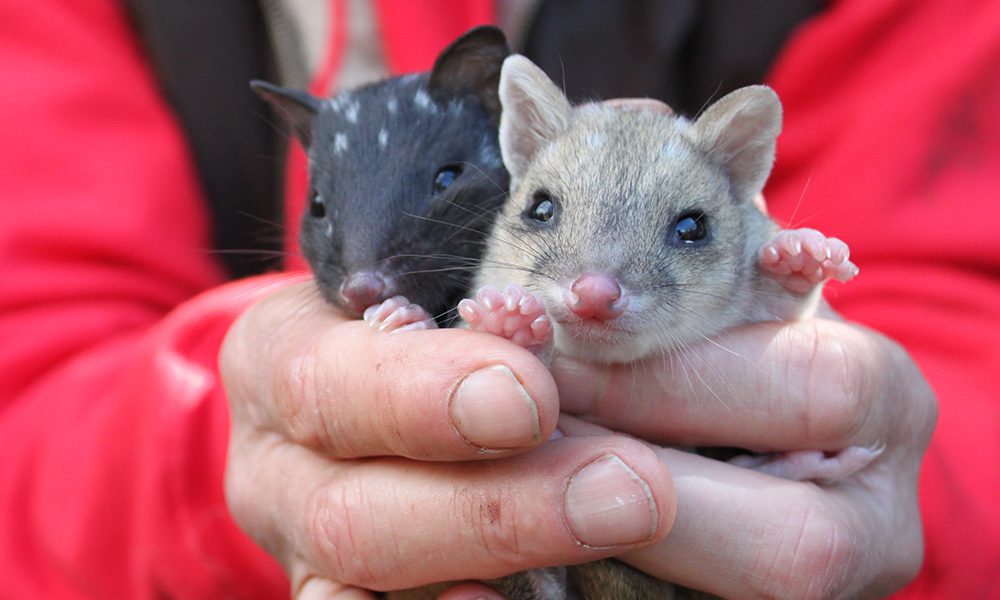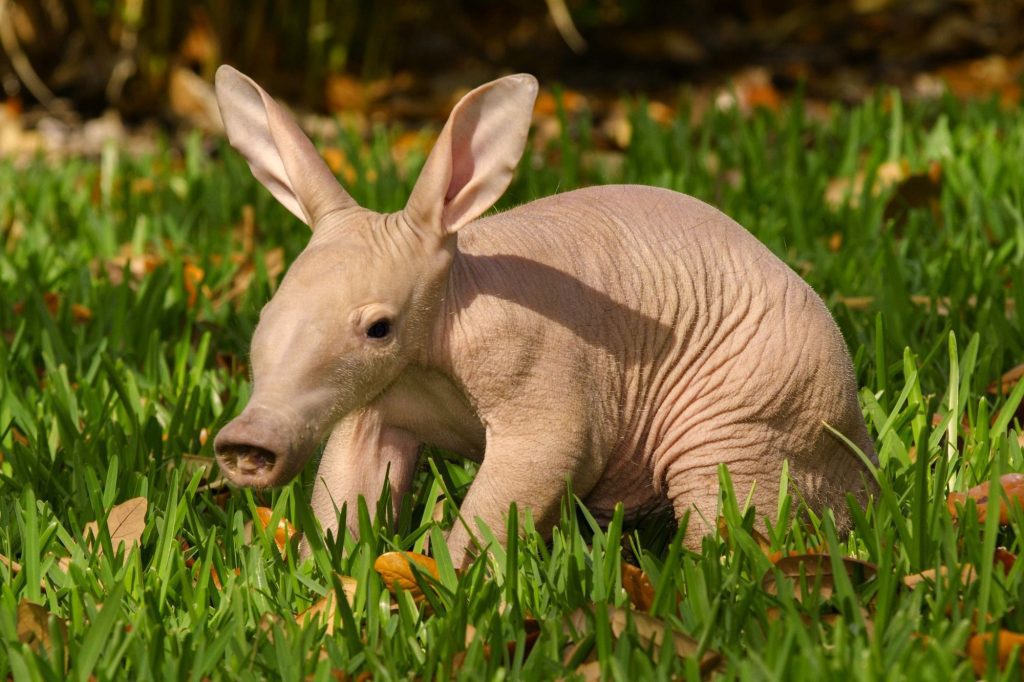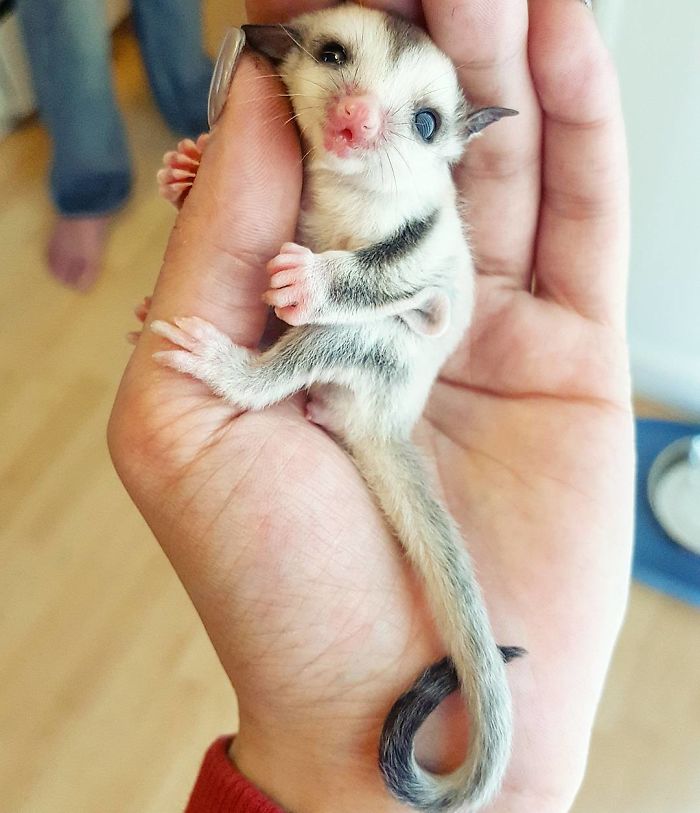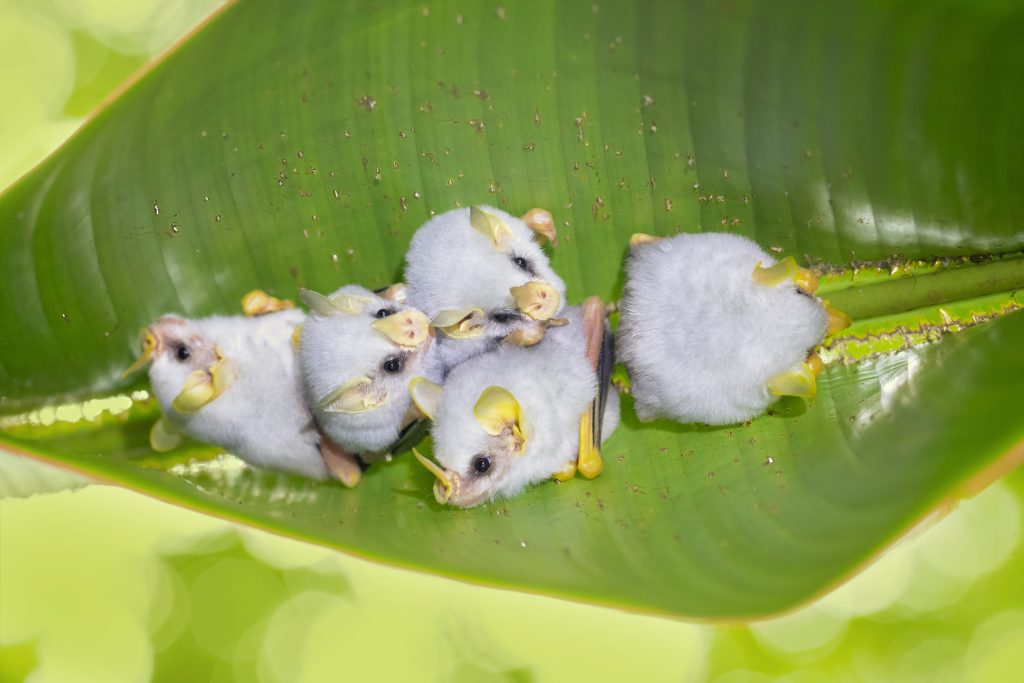40 Smol Exotic Babies That Melt Our Hearts
We all love animals; well, most of us. And baby animals are even more irresistible. You may be a huge animal person, but it’s impossible to know how many unique and wonderful species might have slipped your notice. Sure, you have your cats, dogs, hamsters, tarantulas, and even your pet possums and corn snakes, but they’re nowhere near exotic enough that you can call yourself a lover of all animals. Fret not, dear reader; we are here to help! Here are some of the most unique animals that you never knew about. Or, if you have, perhaps you haven’t seen the pictures…until now. It’s a zoologist’s dream and a zoophobic’s nightmare. And to make things cuter, they’re all in baby form! Do you have a favorite? Let us know!
Baby Armadillo
Okay, okay, we know we’re starting off strong. The armadillo has an odd appearance; they look hairless, the shell looks like a turtle rip-off, and they have a flat head and weird claws. Can’t say this isn’t a unique animal, right?

But look. At. The. Babies. Have you ever seen anything so delicate? They look like a patterned hamster with giant ears wearing a floppy umbrella for a shell. How adorable is that? Fun fact, a baby armadillo is called a pup.
African Wild Dog Puppy
We’re aware that this doesn’t sound like a very exotic species of animal. But hear us out; the African wild dog has become one of Africa’s most critically endangered species. Once nearly 500,000 wild dogs roamed the continent. Sadly, that number has dropped.

However, now there are only an estimated 3,000 to 5,000. There’s a good chance you won’t be able to even see baby African wild dog puppies in the coming years if we don’t do something about it. No species deserves to be wiped out like that.
Baby Axolotl
Try to bring into your mind the image of baby Groot. Cute right? Now imagine baby Groot with little fuzzy locks of hair, and also imagine if baby Groot is underwater. Eventually, you’ll end up with a close approximation of a baby Axolotl.

Also known as water dragons, axolotls are a species of salamander with a very unique genetic makeup. But more importantly, they’re cute as heck. They’re also a friendly, interactive aquatic pet that will give you years of enjoyment if properly kept and cared for.
Echidna Puggle
Have you ever heard a cuter synonym for the word baby than “puggle”? No, we’re not making this up. It’s the technical name for a baby Echidna. When you Google echidnas, you’ll see a big spiky creature known as the spiny anteaters, but they don’t start that way.

No, no, echidna babies, or puggles, are soft and vulnerable. It’s like you are holding a miniature elephant with an exceptionally short trunk in the palm of your hand. Not even joking; we thought it was a Pokemon at first.
Baby Dumbo Octopus
Octopi are already some of the most well-known sea creatures, with some of the best repute through media as well, known for their cute “faces” and being huggy with their tentacles. Now take that cuteness and add Dumbo the elephant’s ears onto it, and you’ve got something incredibly adorable.

Combine the two and you get the Dumbo Octopus, the closest thing you’ll get to a fairy tale sea creature. We kid you not; we don’t have the words to describe how precious dumbo octopus babies look in real life.
Baby Eastern Quoll
Like the Quokkas on Rottnest Island, the quoll is also an animal native to Australia. But what’s even more unique about it is that the quoll’s appearance is deceiving. Even with a mousy face and demeanor, it is actually a cat!

If we didn’t know better, we’d laugh at you if you told us that. Eastern Quolls are a dead ringer for a larger than average rodent species. It’s a bit like a trick of the eyes, baby Eastern quolls look exactly like a spotted hamster. Wild.
Baby Dik-Dik
Hilarious names aside, the Dik-Dik is called such because the name is derived from an onomatopoeia of the repeating “dik” sound made by female dik-diks when threatened. Technically, a dik-dik is any of four species of tiny antelope in the genus Madoqua that dwell in Africa.

These fascinating creatures are among the tiniest antelope species you can find, with the largest barely more than a foot tall. The babies can be the size of a small cat, with impossibly thin, spindly legs and a face not much larger than a tennis ball.
Okapi Calves
We will admit that the okapi is an odd-looking animal; you can not really pin it down as one distinct species at the first glance. But, that’s exactly why the okapi is such a uniquely beautiful and extremely rare animal to behold.

Okapis are also known as forest giraffes and if you looked at their babies, you’d think someone’s gone and played Build-A-Bear, the wild animal edition. In simple terms, baby okapis look like a horse with zebra legs, hyena face, and fuzzy cow ears.
Patagonian Mara Babies
Continuing on this unintentional theme of animals that aren’t what they appear to be, we introduce to you the Patagonian Mara. If we had to guess, evolution started them out as bunnies and tried to take them to capybara territory in terms of appearance and then gave up halfway.

Simply put, the Patagonian Maras have the legs and ears of a rabbit, yet the body and snout of a capybara. And to make matters worse, the Patagonian Mara babies are even more confusing with their appearance. They look exactly like adult rabbits.
Baby White-Nosed Coati
Here’s a house pet option you never knew existed: The White-Nosed Coati. They are one of the cutest varieties of the raccoon family we know of. They’re intelligent and affectionate and will get along with your cats and dogs. They’re easily fed and surprisingly good pets.

Not to mention, their babies are absolutely adorable menaces. Their fur ring around the eyes makes them look like the cutest bandits and you can’t help but want to make sure they’re well-fed and safe. Of course, that also means you’ve fallen right into their trap.
Baby Tarsier
Now, tarsiers may look like flightless bats, but they’re actually part of the primate family. This may or may not be an unfamiliar animal to you, but we can tell you that you definitely didn’t know tarsiers can swing their head around like they’re in the Exorcist.

But their paranormal likeness aside, tarsier babies might be one of the funniest yet most vulnerable things we’ve ever seen. They have a tendency to crouch so they look impossibly timid, and the gigantic wandering eyes just pull you in.
Baby Aardvark
The aardvark is a very unique animal in the sense that it is considered a “living fossil.” It’s an animal so rare and untouched by evolution that all its near relatives, in terms of species, have almost all gone extinct.

It’s possible that the aardvark has looked the same for as long as 50 million years. But you know what? That also means that the baby aardvark has remained as cute as it is for the past 50 or so million years. Lucky!
Baby Bongo
Bongo la, bongo cha cha cha. Catchy tunes aside, the Bongo is actually a species of antelope that’s found in Africa. Imagine someone’s left a bunch of white paint on a regular antelope’s back that’s been allowed to drip down the sides.

There you have it, you’ve imagined a Bongo successfully. Baby bongos (cutest name ever) are similar to baby deer without their intimidating horns and big floppy ears. As bongos are nocturnal, these babies are living the life, staying up WAY past bedtime.
Baby Aye-Aye
No, we are not introducing a baby pirate on this list, But in all honesty, it really should be a proper term for a baby pirate. The Aye-Aye is a legitimate name for a legitimate animal; a long-fingered lemur to be precise.

Now this time, the baby version of the Aye-Aye definitely fits in the unique category of animals on our list. To each their own, but to us the baby aye-aye looks like us after a week of running on 2 hours of sleep and caffeine.
Sumatran Rhino Baby
Everyone loves rhinos… from a distance. They’re our favorite reminder that there used to be things like dinosaurs roaming our earth, and the fact that there’s something that might look right at home in the Jurassic era alive right now is fascinating.

Sumatran rhinos are a far less subtle version of those. If you weren’t paying attention, you might just think they were skinny hippos with pointy noses. The babies are even less recognizable as rhinos because they haven’t grown their horns yet.
Greater Bilby Baby
We’re sure we’ve seen something like the Greater Bilby across multiple media over the years, but it’s hard to pinpoint where exactly we’ve seen it. Perhaps you can recognize it by its other names, like the rabbit-eared bandicoot. No, not Crash Bandicoot. But they do have similar names…

The greater bilby is about the size of a rabbit, with a long-pointed nose, soft pale blue-gray fur, enormous ears, and a black and white tail. Their babies are the most curious-looking creatures, like a mouse who’s had his nose tugged a bit.
Babirusa Babies
Babirusas are one of the more dangerous specimens on our list. Not because they’re particularly dangerous to us — they might be, but we haven’t had a heart-to-heart with them about it — the real reason is that their tusks can literally impale themselves.

And while that is an astronomical bummer, we like to focus on the less macabre things in life, like their babies. Babirusas are also known as deer-pigs, and that shows when you look at their adorable babies. They look like mini pigs.
Saiga Baby
Speaking of cute, deer-like animals, we’d like to introduce you to the Saiga. The Saiga antelope is a Central Asian migratory ruminant found in Kazakhstan, Mongolia, Russia, Turkmenistan, and Uzbekistan. The saiga prefers open, dry steppe grasslands and semi-arid deserts.

They have huge bulbous noses that make them distinctive from other antelope species, making for very unique and adorable offspring. They look like they ran afoul of a bee’s nest as kids and their large noses look quite comical on the babies.
Baby Proboscis Monkey
Another contender for the weird nose gang is the proboscis monkey, also known as the long-nosed monkey, although we think the proper nickname should be the pointy-nosed monkey. It is found primarily in mangrove forests on the southeast Asian island of Borneo.

Proboscis Monkey babies have their natural nosyness (pun intended) to thank for their unique, and frankly hilarious, appearance as little monkey kids. Their long noses start out as extremely upturned noses, and it makes for a hysterical old-timer-trying-to-read-the-paper-through-their-glasses effect. Don’t you think?
Baby Sifaka
If we were to describe the Sifaka’s appearance to you, our best bet would probably be this: think of a lemur that was trying to cosplay a polar bear, but it ran out of costume and couldn’t cover its face or belly.

The sifaka is probably the cuddliest looking lemur out there, with its soft downy fur and the general feeling that it’s very huggable, probably… hopefully. On the other hand, the babies are often described as gremlins with their sparse hair that hasn’t grown in yet, shame.
Southern Pudu Fawn
The miniature versions of literally any animal on the planet are immediately considered the cutest possible version of said animal. There’s just something about how small and fragile the mini version looks that’s impossible not to fawn over — pun intended.

The Southern Pudu is the smallest member of the deer family! Adults measure only 43 centimeters in height when fully grown, and at birth, a fawn is so small that it weighs less than a bag of sugar. Can you believe it?
Baby Civet
Although they are commonly called the civet cats, civets are not from the cat family at all. They are more closely related to mongooses rather than felines. Perhaps they came by the nickname as they are quite suitable as pets.

Another reason for that misunderstanding might be because baby civets are so stinking cute. When they’re born, you might very easily mistake them for some exotic breed of kitten. If we had to pick an “exotic” pet to have, civets might be at the top of our list.
Baby Bactrian Camel
Camels are great; we can all agree on that. Gotta love a good ol’ camel. Bactrian camels are special for two reasons. One, they have two humps on their backs, unlike a regular camel. The second reason is that they are endangered.

The Bactrian camel is also known as the Mongolian camel, and they are found in the steppes of Central Asia. Baby Bactrian camels are adorable in the sense that, as they haven’t grown their humps yet, they just look like haughty, earless goats.
Baby Takin
But as we’re talking about domesticated animals, we figured we’d also like to continue takin about baby Takins (no shame whatsoever with that pun). The takin, also called cattle chamois or gnu goat, is a large, muscular, hoofed mammal, sometimes referred to as a goat antelope.

Baby Takins are similar to baby goats, with the distinction being that they are far fluffier as babies than normal goats and that they also lack the big floppy ears you’d expect on a baby goat. Nonetheless, they are adorable, mischievous-looking creatures.
Baby Pangolin
Remember the spiny anteaters from earlier? We now raise you: the scaly anteater. They’re formally known as Pangolins, and live in Africa, preferably somewhere with sandy soils, and can be found in water-accessible forests and savannas. Not only do they look cute, but we have one more fact for you…

Like hedgehogs, they can roll up into a ball. This instinctive protection is something they’re literally born with; baby pangolins have hardened scales only two days after they’re born. Despite all this natural armor, baby pangolins are surprisingly delicate-looking things.
Baby Quoll
Another returning star on our list, the quoll babies aren’t quite done with us yet. This particular breed of quoll is known as the Spotted Tail Quoll and is found in Tasmania, much like our good friend the Eastern Quoll.

What sets these two apart? You guessed it, a spotted tail. The spotted tail quoll, much like eastern quolls, has very adorable babies. Very much the same Stuart Little level of cuteness, all while being distinguished by their signature tails.
Baby Tapir
We have yet another living fossil in our midst, dear readers; it is the humble Tapir. We’re sure we’ve seen a distant relative or two of the Tapir in old dinosaur books. They have a very not-current-evolution-stage appearance, with a prehensile nose and general dinosaur lookalike-ness.

With adults weighing 300-700 pounds, they are South America’s largest native land animal. The babies aren’t slouches either, they are born 22 pounds and huggable as anything. They’re also born with natural camouflage like stripes and spots, which fade as they grow older.
Baby African Bat
We might be…looking at somewhat of a theme here, with more and more animals of a similar variety joining our ranks on this list. We have another contender for most unique echolocator, in the form of the baby African Bat.

Though there is absolutely no shortage of bats in Africa, this one, the Blasius’s horseshoe bat, is featured on our list because of how cute and martial arts forward their babies are. Just look at this little one, ready to karate chop through life.
Baby Lowland Streaked Tenrec
Yes, we know. The name just rolls off the tongue, doesn’t it. But what exactly is a Tenrec? Well, we’re not sure, but reassuringly neither are researchers. It’s comforting to know there are many things yet to be discovered about the animal kingdom.

A tenrec is any kind of mammal that is native to Madagascar and belongs to the afrotherian family Tenrecidae, apparently. Scientists have yet to find a proper category; hedgehogs, shrews, opossums, rats, or mice? All we know is, their babies look like spiky Pokemon.
Baby Mouse Deer
The Mouse Deer also belongs to the “where on earth do we put this in the classification tree” family of small hoofed animals with no clear genus and can be any one of 10 different species in this unique category.

The mouse deer can be found in the warmer portions of Southeast Asia, India, and Africa. They are one of the tiniest hoofed animal species, measuring less than 22 inches (55 cm) in length as adults. And their babies? Miniscule!
Baby Tree Kangaroo
BABY. TREE. KANGAROO. Has a better recipe for one of the most adorable animals on the planet ever been created? We don’t think so. A tree kangaroo is basically every single thing we like about kangaroos, or wallabies to be exact, and maximizing cuteness.

They are the size of bear cubs, they live in the trees, they have big tails for stabilization like monkeys or lemurs…and they’re furry kangaroos. Truly the best of all worlds. Baby tree kangaroos look absolutely precious in their cute pouches; what a world we live in.
Gerenuk Calf
The Gerenuk may not be the most familiar animal for most of us, but believe us, it’s real. Gerenuk is a Somali word meaning “Giraffe-necked” and is the formal name for the Giraffe gazelle, a long-necked antelope found in East Africa and the Horn of Africa.

Either mother nature’s just putting out remixes of the animal kingdom at this point, or zoologists are making up names via darts on a classification board. And the calves are even more alien-like, with their gigantic ears on a tiny head and impossibly thin neck.
Baby Sunda Colugo
Now the Sunda Colugo, also known as the Malayan flying lemur, may look normal enough, however it is far more unique and way more of a rip off than it seems. Anatomically, it is a lemur that’s basically one giant flap of skin.

You’d assume now that it’s practically a bat-like lemur right? Wrong. The Sunda Colugo cannot fly at all, it merely glides on the air a little. Their wide starry-eyed babies with dreams of flying will be devastated when they grow up.
Chacoan Peccary Baby
Most of you might have come across the word peccary one time or another in books, because we’re certain old novels used the word a ton. It may look like a pig but it is an entirely different species from the genus Catagonus.

No matter; if we can’t classify them as pigs, we’ll just ignore that face. Because look at their babies! Look at them and tell us you don’t see a teacup pig in the picture. They’re the spitting image of baby pigs!
Baby Gundi
We have a mouse in the house, readers. Wait no, it’s a rat. But fret not, the Gundi is a very cute rat, we assure you, not the scare the life out of you at 3 am variety. Don’t worry about this little fella.

When we looked up the Gundi we were expecting a huge rat as well, not a tiny guinea pig look alike. The Gundi is a surprisingly adorable comb rat from Africa, and its babies are the most precious things ever!
Baby African Bat-Eared Foxes
We’ve truly been sleeping on the sheer multitudes of adorable and unique creatures the continent of Africa has to offer the world. In this instance, we mean the African Bat-Eared Foxes. The term bat-eared suggests they have some echolocation skills…

But really it’s just to describe their massive ears. Compared to the common red fox, the African Bat-Eared Foxes are just a little bigger, but that doesn’t take away from their beauty. Nor does it make their babies any less adorable.
Baby Sugar Glider
No, unfortunately unlike the name suggests, the sugar glider cannot make bridges of candy and sugar to glide across. Sugar gliders acquire their name from the unique flap that connects the front leg to the hind limb, allowing them to glide.

They can glide half the length of a soccer field in a single trip, to be exact. These palm sized possums have their tiny lightweight bodies for their impressive airtime. Their babies are also impossibly small, tiny enough to rest upon your finger.
Baby Fennec Fox
The Fennec Fox is already quite well known worldwide for not only being the smallest breed of fox in existence, but naturally, also being the cutest breed of fox on the planet. Perhaps that’s why they live in such harsh climates, to hide the cuteness.

Because they favor sandy deserts and dry areas with desert plants or scrub vegetation. Fun fact, baby fennec foxes are actually called kits! They also have this habit of making a little baby fennec fox pile when they’re chilling out.
Fluffy Honduran White Bat Baby
There’s a theme coming into view here we think, these cute animal babies look a lot like cartoon characters we love and grew up with. Just take this fluffy Honduran white bat baby, for example. Very vampire-themed, don’t you think?

If you look closely, make the body black and the snout and ears dark, don’t they look like baby bat Mavis from Hotel Transylvania? So that’s where they got their character design — we can’t blame them. These are the cutest bats we’ve ever seen.
Baby Elephant Shrew
The elephant shrew does not get its name because it is absurdly large, if someone was thinking that. The reason behind the name is that elephant shrews have very long, dexterous, mobile and trunk-like noses, much like an actual elephant.

Elephant shrews are positively miniscule. An adult at its largest is probably somewhere around four inches big. But you know what is captivating? Watching baby elephant shrews figure out how their noses work. Now that is awe inspiring. Also, it’s hilarious.
